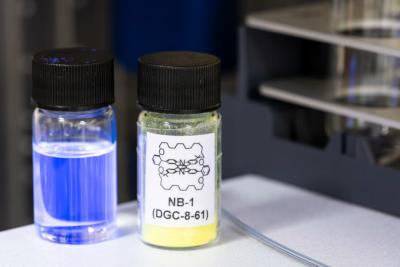Researchers from the UK's Northumbria, Cambridge, Imperial and Loughborough universities developed a new Hyperfluorescence OLED emitter system based on a new molecular design, which is highly efficient and simple to produce.
The researchers explain, that in Hyperfluorescence systems, the elimination of the Dexter transfer to terminal emitter triplet states is the key towards OLED efficiency and stability. Current devices rely on high-gap matrices to prevent Dexter transfer, which unfortunately leads to overly complex devices from a fabrication standpoint. The researchers developed a novel molecular design in which ultranarrowband blue emitters are covalently encapsulated by insulating alkylene straps.
The researchers say that the new OLED devices, which features simple emissive layers consisting of pristine TADF hosts doped with encapsulated terminal fluorescence emitters exhibit negligible EQE drops compared with non-doped devices, enabling a maximum EQE of 21.5%.
Using transient absorption spectroscopy, the researchers observed that the Dexter transfer from a pristine thermally activated delayed fluorescence sensitizer host can be substantially reduced by an encapsulated terminal emitter, opening the door to highly efficient ‘matrix-free’ blue hyperfluorescence.


